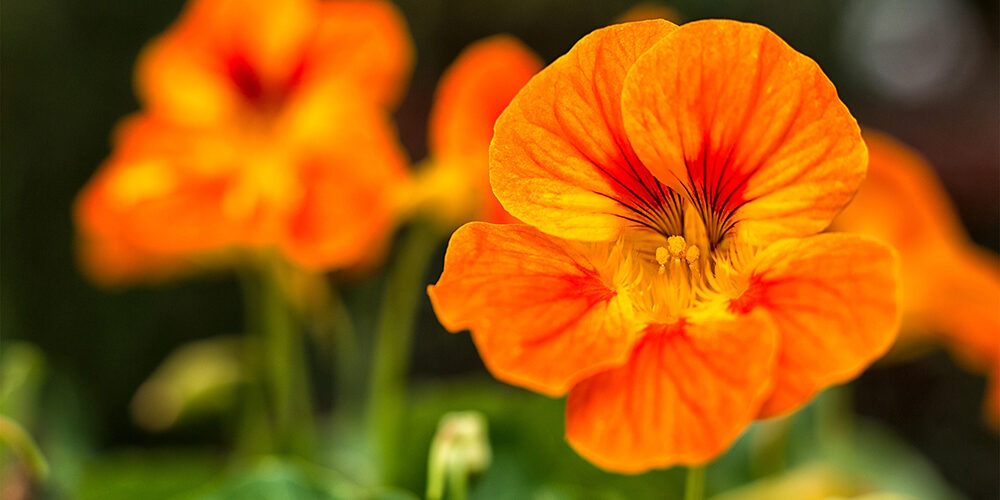Growing Nastrutium
Posted On April 6, 2020

Nasturtium is an easy-to-grow annual whose leaves and flowers are edible. Here’s how to grow your own nasturtiums!
These plants, with their bright greenery and vibrant flowers, are good for containers or as ground cover. Their pretty fragrance also makes them a good choice for cut flowers. Nasturtiums are perfect to grow with children because they grow so easily and rapidly.
Planting
- You can start the seeds indoors 4 to 6 weeks before the last spring frost.
- Plant nasturtium seeds in early spring in moist, well-drained soil in full sun. They can grow in partial shade, but they will not bloom as well.
- Nasturtiums prefer poorer soils and they do not need fertilizers (unless your soil is extremely poor). Fertile soil will produce fewer blooms and more foliage.
- Plant the seeds about half an inch deep and 10 to 12 inches apart. Plants should appear in 7 to 10 days.
Care
- Water regularly throughout the growing season, but be careful not to over-water your plants.
- Cutting off the faded/dead flowers will prolong blooming.
- If you’re growing nasturtiums in containers, they may need to be trimmed back occasionally over the growing season.
Pests/Diseases
- Flea beetles
- Caterpillars
- Aphids
- Slugs
- Whiteflies
- Viruses
Harvest/Storage
- Save the nasturtium’s chick-pea-size seeds and replant them in the spring! Let the seeds dry out on the vine; they’ll fall off. Collect them, brush off the soil, dry them, and store them in a paper envelope in a cool and dark place.
Recommended varieties
- ‘Salmon Baby’, to add a pretty salmon-pink color to your garden.
- ‘Variegatus’, which is a trailing type with red or orange flowers.
- ‘Peach Melba’, which is derived from nasturtiums and has creamy yellow flowers with orange-red centers.
Website: www.almanac.com